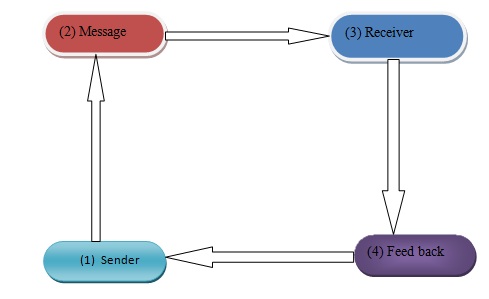- Communication can be classified according to either the levels of the communicating parties or according to the nature of the message.
- According to levels- This can either be:
- Vertical Communication
- Horizontal Communication
- Diagonal Communication
- According to nature of message - This can either be;
- Formal communication
- Informal communication
Vertical Communication
- This is where messages are passed between a senior and her/his juniors in the same organizations
- Vertical communication can be divided into;
- Downward communication - This is a communication process which starts from the top manager to her/his juniors. This if communication informed by; training of juniors, evaluating perfomance, delegating duties, solving workers' problems, and inspiring juniors.
- Upward Communication - This is a communication process that starts from the juniors to the seniors and maybe in the form of; submission of reports, giving suggestions, and making inquiries.
Horizontal Communication
This is communication between people of the same level (rank) in the same organization e.g. departmental heads in an organization may communicate to achieve the following:
- Co-ordination and harmonization of different activities.
- To create teamwork within the department.
- To exchange ideas in order to develop human resources.
- To reduce goal blindness among different departments.
- To create a sense of belonging among department heads thus acting as a motivating factor.
One of the major characteristics of this type of communication is that there are less inhibitions.
The people involved are more open and free with each other than in the case of people with different ranks.
Diagonal Communication
- This is communication between people of different levels in different departments or different organizations e.g. an accounts clerk may communicate with a sales manager of the same organization or of different organizations.
- Diagonal communication enhances team work.
Formal Communication
- This is the passing of messages or information using the approved and recognized way in an organization such as official meetings, memos and letters.
- This means that messages are passed to the right people following the right channels and in the right form.
- Formal communication is also known as official communication as it is the passing of information meant for office purposes.
- Formal systems of communication are consciously and deliberately established.
Informal Communication
- This is communication without following either the right channels or in the right form i.e. takes place when information is passed unofficially.
- It is usually used when passing information between friends and relatives hence it lacks the formality.
- Informal communication may also take the form of gossips and rumor-mongering.
- Informal communication usually supplements formal communication as is based on social relations within the organization.
-
Note: Both formal and informal communication is necessary for effective communication in an organization.


